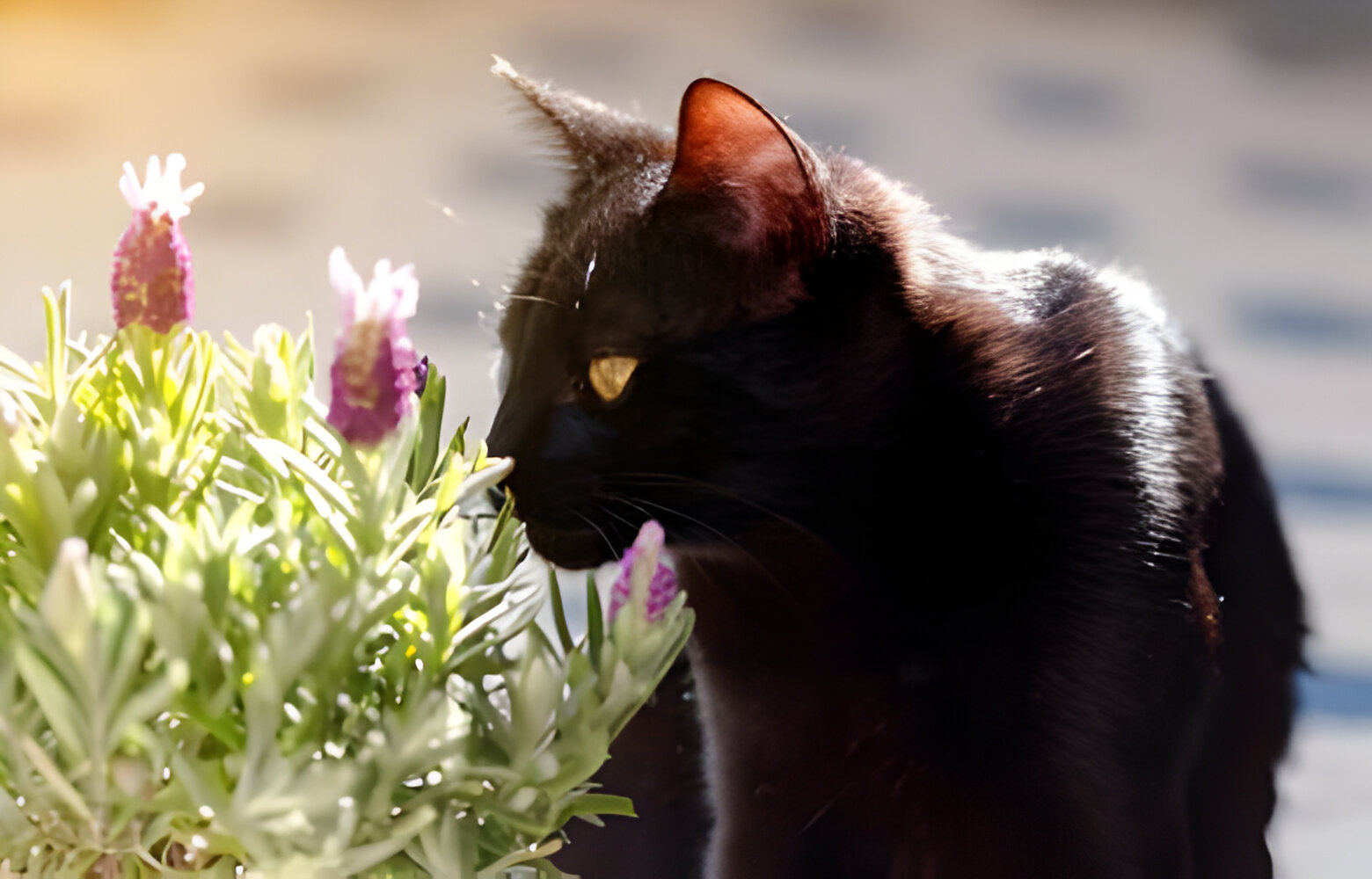Our feline friends live in a world rich with scents. With their highly sensitive noses, cats experience their environment through smell in ways that are far beyond our human capabilities. Understanding how different fragrances impact cats is essential for creating a safe and comfortable home for them. This blog will delve into the world of feline olfaction, the effects of various scents on cats, and provide practical tips for pet owners.
The Feline Sense of Smell
Cats possess an extraordinary sense of smell, with up to 200 million odor-sensitive cells in their noses, compared to the 5 million humans. This acute olfactory system allows them to detect a wide range of scents and interpret their environment primarily through their noses. Smell plays a crucial role in a cat’s life, from identifying territory and recognizing other animals to detecting food and sensing danger.
How Fragrances Affect Cats
Natural Scents
- Catnip (Nepeta cataria): Catnip is well-known for its intoxicating effect on cats. The herb contains nepetalactone, a compound that triggers a temporary state of euphoria and playfulness in many cats. Not all cats respond to catnip, as sensitivity is hereditary, but for those that do, it can be a delightful and harmless way to stimulate and entertain them.
- Valerian Root: Similar to catnip, valerian root can excite and energize cats. It’s often used as an alternative for cats that do not respond to catnip. The active compound, actinidine, produces a euphoric effect in some cats, making it a useful tool for enrichment.
- Silvervine (Actinidia polygama): Silvervine is another plant that has a catnip-like effect on felines. It contains two compounds, actinidine and dihydroactinidiolide, which can induce playful and euphoric behaviors. It’s especially popular in Asia and often preferred by cats over catnip.
Artificial Scents and Household Products
- Essential Oils: While essential oils are popular in aromatherapy for humans, many can be toxic to cats. Oils like tea tree, peppermint, citrus, pine, and eucalyptus are particularly harmful. Cats lack certain liver enzymes needed to metabolize these compounds, leading to a risk of toxicity. Symptoms can include drooling, vomiting, tremors, and even liver failure.
- Cleaning Products: Many household cleaners contain chemicals and fragrances that can be irritating or toxic to cats. Bleach, ammonia, and phenol-based products can cause respiratory issues, skin irritation, and other health problems. Opt for pet-safe, unscented cleaners whenever possible.
- Air Fresheners and Scented Candles: Air fresheners, plug-ins, and scented candles may make your home smell pleasant too, but they can be overwhelming or harmful to cats. These products often contain volatile organic compounds (VOCs) that can cause respiratory irritation and other health issues in cats. Consider using natural alternatives like baking soda or activated charcoal for odor control.
Food and Treats
- Aromatics in Food: Cats are obligate carnivores with a strong preference for meat-based scents and flavors. They are attracted to foods with a high protein content and often show a keen interest in the smell of fresh meat. When selecting cat food, consider the aroma as well as the nutritional content to ensure it appeals to your cat’s senses.
- Treats with Scents: Many commercial cat treats are designed to be aromatic to attract cats. While these can be useful for training or rewarding your cat, be cautious of treats with artificial additives and excessive preservatives. Opt for natural, high-quality treats to keep your cat healthy and happy.
Creating a Cat-Friendly Scent Environment
Safe Scents for Enrichment
- Herbal Sachets: Create small sachets filled with cat-safe herbs like dried catnip, valerian root, or silvervine. Place these sachets in areas where your cat likes to play or relax to provide a stimulating and enjoyable scent experience.
- Homemade Cat Toys: Incorporate scented herbs into homemade cat toys. Fabric toys stuffed with catnip or valerian root can provide hours of entertainment and enrichment for your cat.
- Scented Play Areas: Designate areas in your home where you can safely use cat-friendly scents. This could include a playroom with catnip-scented toys or a relaxation corner with a valerian-scented blanket.
Avoiding Harmful Scents
- Pet-Safe Cleaning Products: Use cleaning products specifically formulated to be safe for pets. These products are typically free from harsh chemicals and strong fragrances that could harm your cat.
- Natural Air Fresheners: Instead of using chemical air fresheners, consider natural alternatives like baking soda, activated charcoal, or essential oil diffusers with pet-safe oils (like lavender, used sparingly and in well-ventilated areas).
- Non-Toxic Candles: If you enjoy using candles, choose those made from soy or beeswax with natural, pet-safe fragrances. Avoid candles with synthetic scents or those containing essential oils harmful to cats.
Recognizing Signs of Scent-Related Distress
It’s crucial to be aware of how your cat reacts to different scents. Signs that a fragrance is causing distress or discomfort include:
- Sneezing or coughing
- Excessive grooming or scratching
- Drooling or vomiting
- Lethargy or hiding
- Behavioral changes, such as increased aggression or anxiety
If you notice any of these symptoms, remove the offending scent and consult your veterinarian.
Understanding the impact of fragrances on cats is essential for creating a safe and stimulating environment for your feline companion. While some scents, like catnip and valerian root, can provide enrichment and enjoyment, others, particularly many essential oils and artificial fragrances, can pose serious health risks. By being mindful of the scents in your home and opting for cat-safe alternatives, you can ensure that your cat’s environment is both pleasant and safe. Always observe your cat’s reactions to new scents and consult with your veterinarian if you have any concerns. With careful attention, you can create a scent-rich world that enhances your cat’s well-being and happiness.

